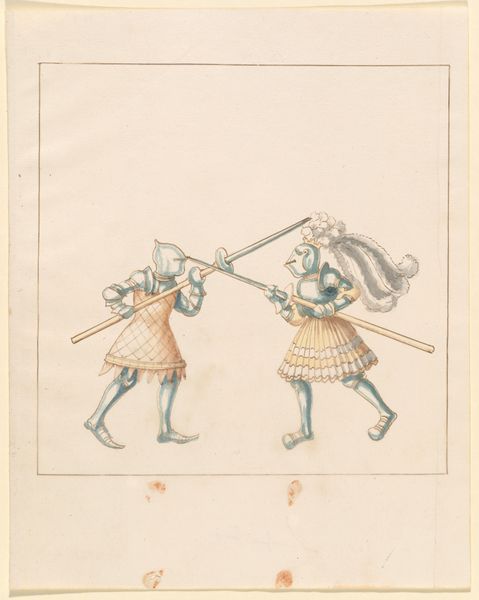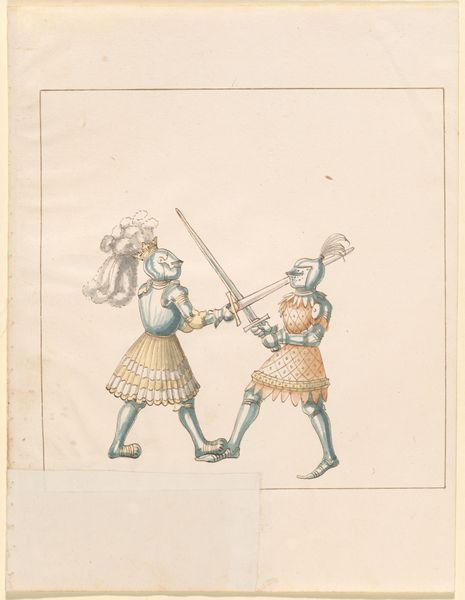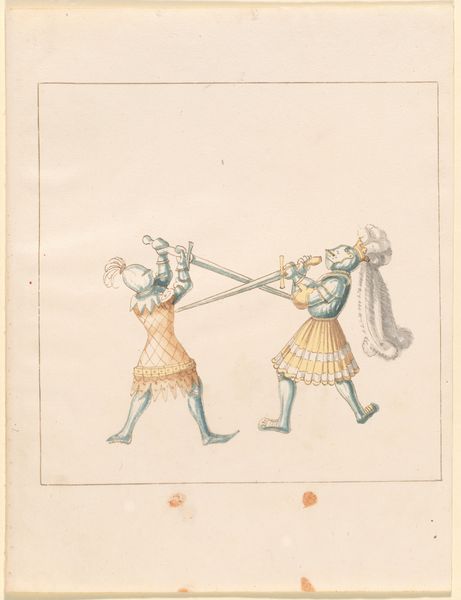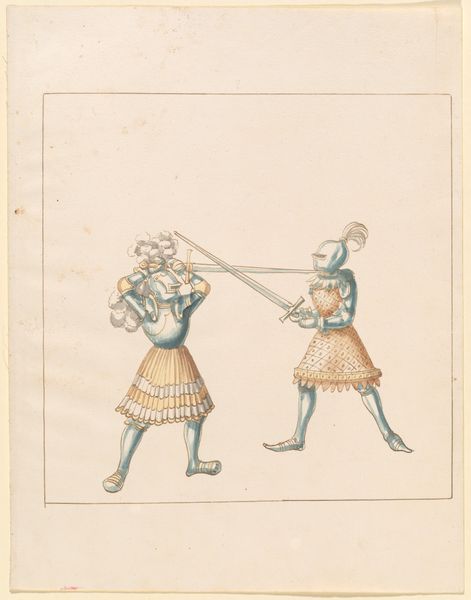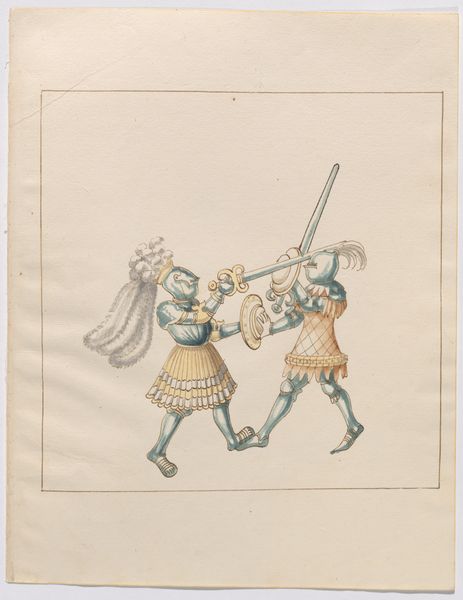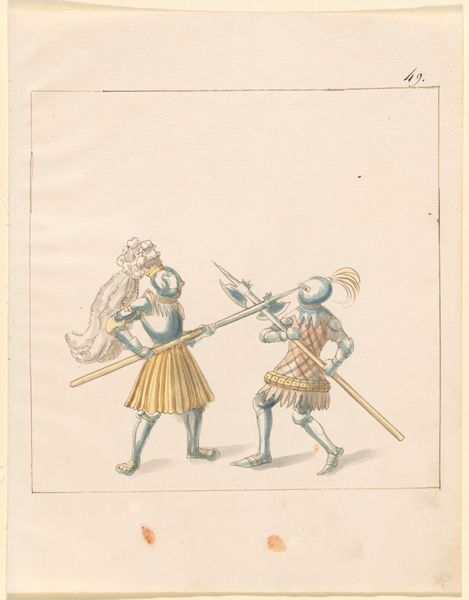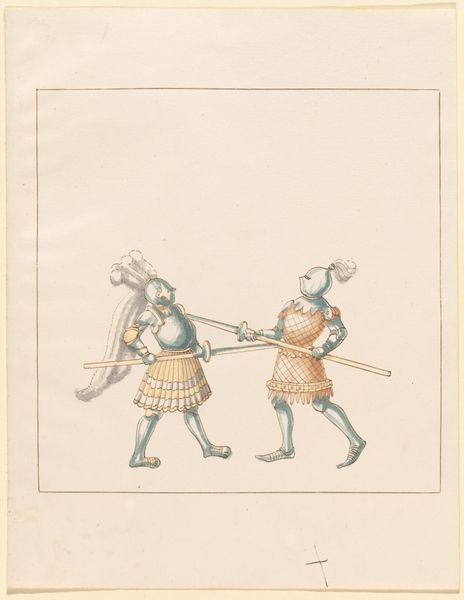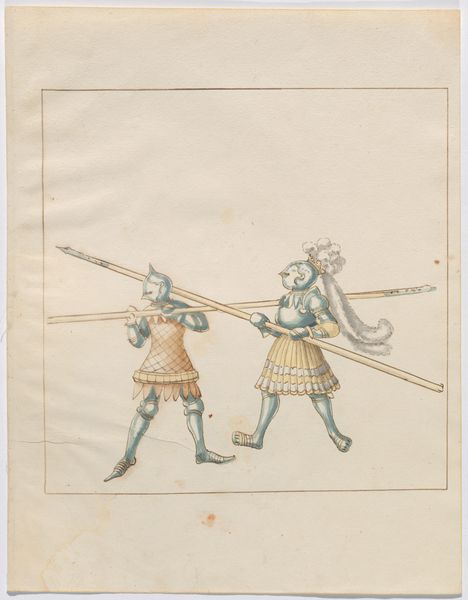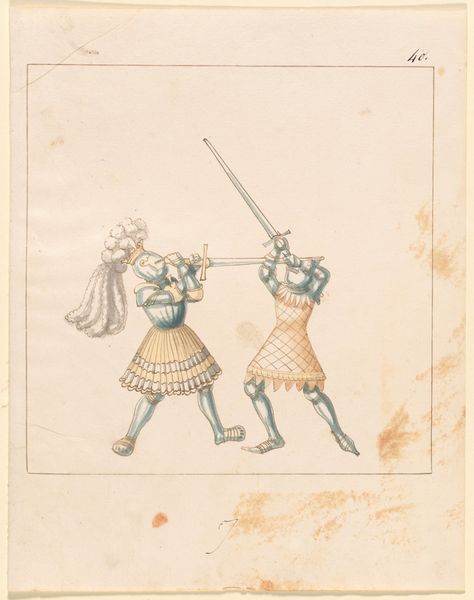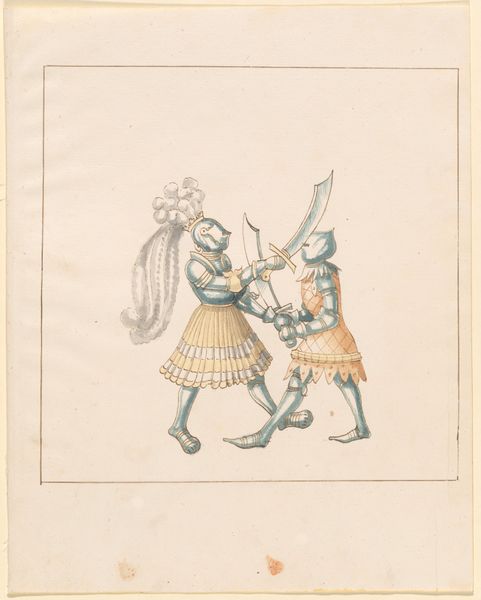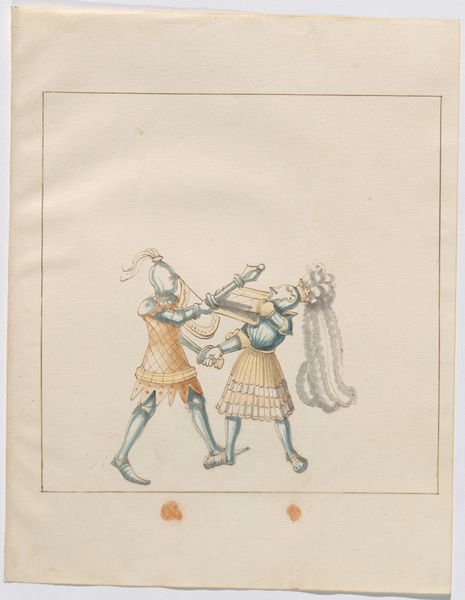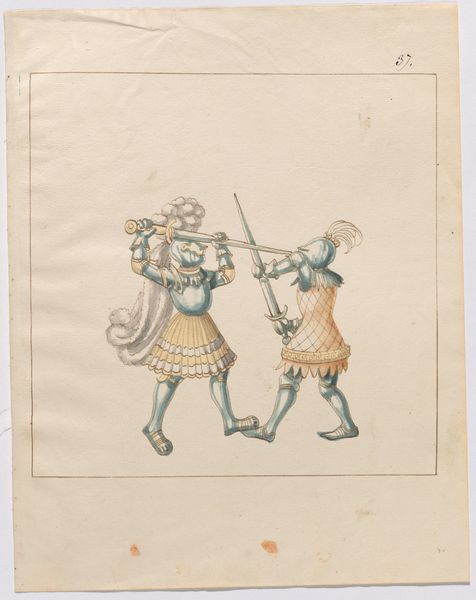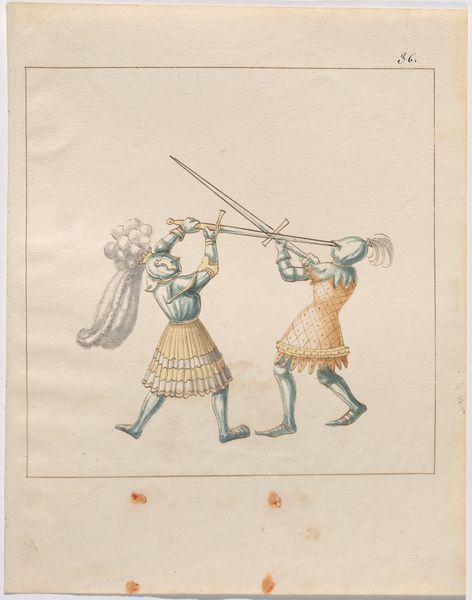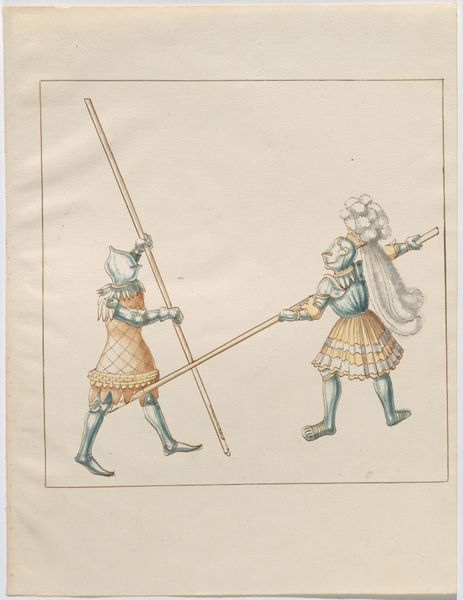
drawing
#
drawing
#
toned paper
#
blue ink drawing
#
personal sketchbook
#
ink drawing experimentation
#
sketchbook drawing
#
watercolour bleed
#
watercolour illustration
#
storyboard and sketchbook work
#
sketchbook art
#
watercolor
Dimensions: sheet: 33.1 × 26.2 cm (13 1/16 × 10 5/16 in.)
Copyright: National Gallery of Art: CC0 1.0
Editor: This is an ink and watercolour drawing, "Foot Combat with Flails," dating back to 1512-1515, by an anonymous artist. It has the feel of a personal sketchbook study. What draws your eye when you look at this piece? Curator: The rendering of the flails is particularly interesting. These aren’t just weapons; they are crafted objects, products of a specific labour. This wasn’t fine art initially but rather a practical record. Do you notice how the ink defines the armour, meticulously describing the fabrication of the individual metal plates? Editor: I do, especially the articulation around the joints! What does that tell us? Curator: It directs our gaze towards the societal value placed upon such armour. It speaks to a specific culture of production and consumption, where craftsmanship, even in instruments of conflict, was highly prized. Also, think about who would have commissioned or owned these flails, and consider their position in society. It’s about labor, class, and the materiality of warfare itself. Editor: So, the drawing becomes a record, not just of combat, but of economic and social status, reflecting the materials used and who controlled them? Curator: Exactly! It shifts the focus away from simple aesthetic appreciation and forces us to contemplate the means of production and the socio-economic factors embedded within these seemingly straightforward depictions of combat. Editor: That gives me a totally new perspective on looking at historical art. Thank you. Curator: The pleasure was mine. Thinking about art as a product of its time, shaped by labor and material conditions, allows us to engage with it in a much more grounded way.
Comments
No comments
Be the first to comment and join the conversation on the ultimate creative platform.
